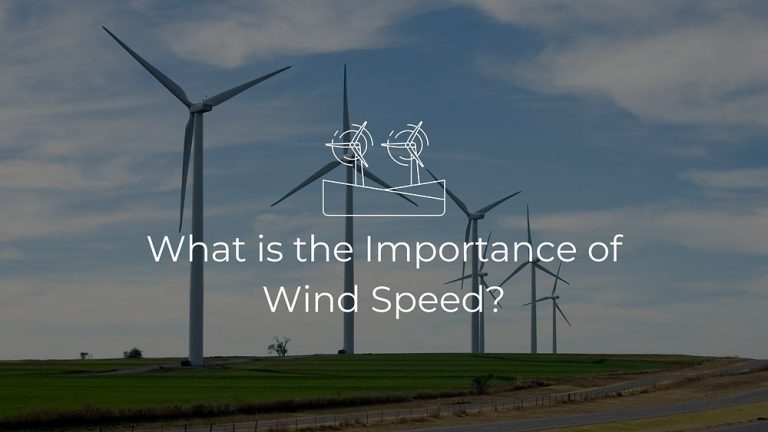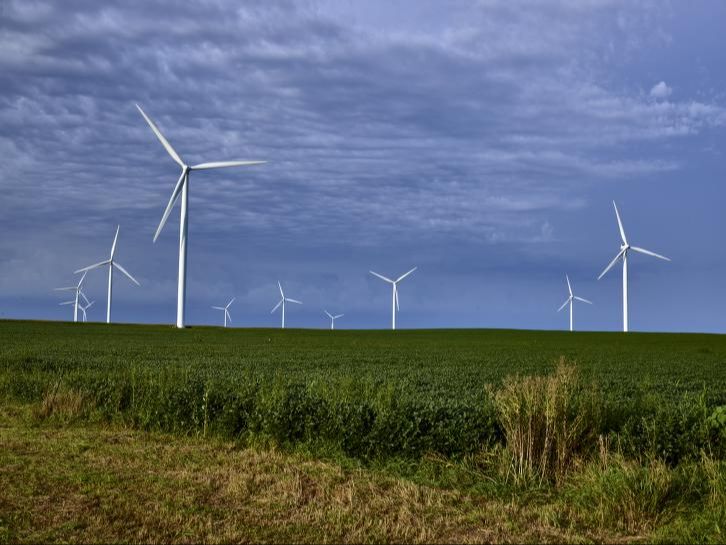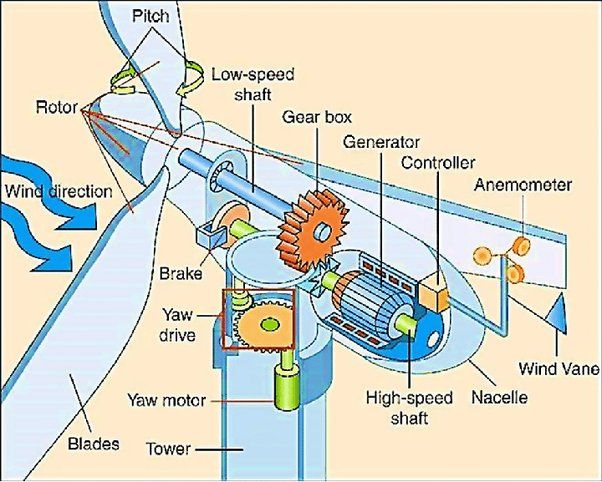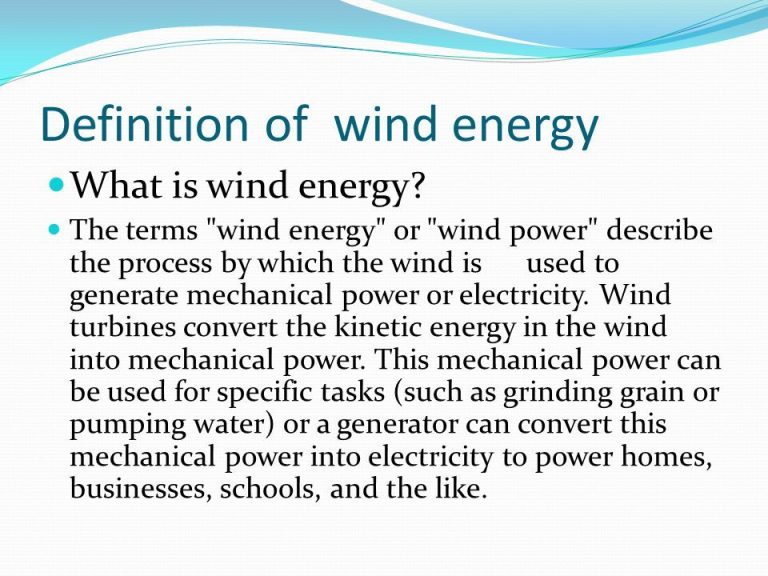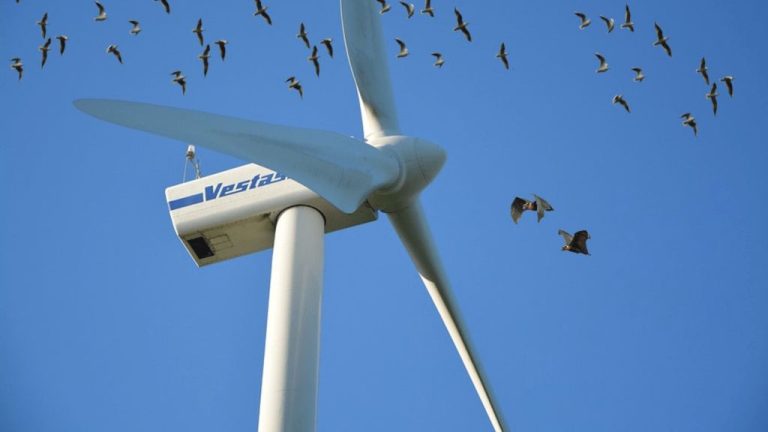Intermittent Energy Source Meaning
Definition of Intermittent Energy Sources
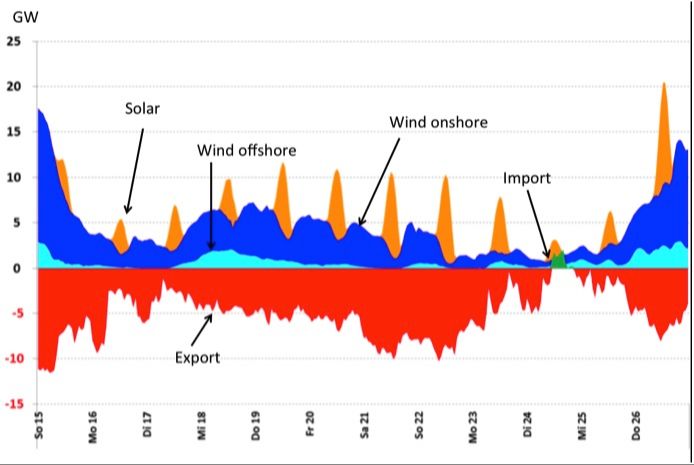
Intermittent energy sources are power generation technologies that produce electricity in an inconsistent or unpredictable manner. Unlike baseload power plants that run continuously to meet minimum grid demand, intermittent renewables generate energy according to variable, uncontrollable factors like sunlight, wind speed, and tidal cycles.
The most common intermittent renewables are:
- Solar photovoltaics, which generate electricity when sunlight hits their panels.
- Wind turbines, which convert wind energy into electrical energy but rely on sufficient wind speed.
- Tidal power stations, which harness the energy from rising and falling tides but depend on tidal variability.
These sources differ from traditional baseload plants like coal, nuclear, natural gas, and hydroelectric dams that provide stable, reliable output regardless of external conditions. Intermittent renewables introduce power supply fluctuations based on weather patterns, seasons, time of day, and other natural forces.
Why Intermittency Matters
The intermittent nature of renewables like wind and solar poses challenges for grid reliability and stability. Unlike traditional baseload power plants that can be dispatched on demand, the output from renewables fluctuates depending on weather conditions and time of day. According to the North American Electric Reliability Corporation (NERC), metrics tracking blackout duration and unserved energy demand spiked in 2020 due to weather-related events and the growth of intermittent generation on the grid [1].
The unpredictability of renewables makes balancing electricity supply and demand more difficult. Grid operators have to schedule power from conventional generators like coal and natural gas to fill in when the sun isn’t shining or wind isn’t blowing. Costly measures like spilling excess hydro or curtailing wind may be needed when renewable generation is high but demand is low. Reliable baseload power that can quickly ramp up or down is still required to maintain grid stability as more intermittent resources are added.
Causes of Intermittency
Renewable energy sources like solar, wind, and tidal power depend heavily on weather and environmental conditions, which can cause significant variances in their output. Their generation capacity cannot be controlled in the same way as conventional power plants (Scientific American, 2015).
The amount of sunlight reaching solar photovoltaic panels varies throughout the day and year, affecting solar output. Cloud cover, rain, snow, and other weather events can greatly diminish solar energy production (BPA, 2022). Solar conditions also change seasonally with the sun’s position in the sky.
Wind power relies on sufficient wind speeds to spin turbine blades and generate electricity. Wind conditions can fluctuate hourly, daily, and seasonally, causing intermittent generation. Locations with steady wind resources see less variability than those with gusty or turbulent winds (BPA, 2022).
Tidal energy depends on the natural rise and fall of ocean tides, which are driven by the gravitational forces of the sun and moon. The resulting tidal currents and water levels vary in predictable cycles but can still cause intermittency issues when integrated into the electric grid (Sciencedirect, 2022).
Overall, the weather-dependent nature of these renewable sources makes their output variable and challenging to manage compared to the relative stability of fossil fuel power plants.
Managing Intermittency
There are several key ways grid operators manage the variability and uncertainty inherent in intermittent renewables like wind and solar power. These strategies help balance supply and demand and maintain grid reliability.
One approach is deploying grid energy storage, such as batteries and pumped hydro power. Grid-scale batteries store excess renewable energy when supply exceeds demand and discharge when it dips. Pumped hydro also serves as a giant battery, pumping water uphill into a reservoir when supply is abundant and releasing it to generate power when renewables lag. According to the U.S. Department of Energy, the United States has over 22 gigawatts of pumped storage capacity, providing 95% of utility-scale energy storage.[1]
Demand response programs and smart grids also help accommodate variable renewables. With demand response, utilities provide incentives for large energy users to reduce consumption during periods of low renewable generation. Smart grids use digital sensors, controls, software and analytics to balance fluctuations in renewable supply and demand in real-time.[2]
Additionally, interconnecting regional grids through high-voltage transmission lines allows utilities to share excess renewable energy over large areas. This helps mitigate local variability in wind and solar output. According to the National Renewable Energy Laboratory (NREL), interconnections enable smoother integration of renewables.[3]
Forecasting and Modeling
Accurately forecasting the output from intermittent renewable energy sources like wind and solar is critical for integrating high levels of variable generation into the grid. Significant progress has been made in improving weather prediction models to enable more granular and farther-ahead renewable generation forecasting. For example, the National Renewable Energy Laboratory (NREL) has developed high-resolution weather forecasting models that provide grid operators with realistic wind and solar power generation forecasts up to several days ahead (https://www.nrel.gov/docs/fy16osti/65728.pdf).
Advanced statistical techniques and machine learning are also being applied to model the complex relationships between weather variables and renewable generation. By analyzing vast amounts of historical weather, generation, and operational data, algorithms can now forecast intermittent generation at 5 minute intervals for the next 48 hours with over 90% accuracy in some cases. As computing power and data availability continue to improve, so too will the precision of renewable energy forecasting through sophisticated modeling.
Increasing System Flexibility
One way to better manage the intermittency of renewable energy is by increasing the flexibility of the overall electricity system (Martinot, 2016). This involves both generation and transmission solutions.
On the generation side, building flexible power plants like natural gas and hydroelectric facilities that can ramp up and down quickly helps smooth out fluctuations in renewable output. These plants provide crucial backup power when the sun isn’t shining or wind isn’t blowing.
Transmission solutions focus on developing more flexible grid infrastructure to move power from areas of high renewable generation to areas of high demand. Expanding and upgrading transmission lines allows optimal dispatch of intermittent renewables across wider geographic regions (Martinot, 2016).
With the right mix of flexible generation and transmission, electricity systems can cost-effectively integrate higher levels of variable renewable energy.
Curtailing Intermittent Generation
As the share of renewables like wind and solar grows on power grids, one way system operators manage oversupply is by curtailing intermittent generation. Curtailment occurs when renewable assets are instructed to reduce their output during periods when supply exceeds demand. This represents lost clean energy production, so curtailment is generally seen as an inefficient outcome.
To reduce the need for blanket curtailment orders, some grid operators are implementing market-based curtailment schemes. These strategies aim to incentivize renewable generators to curtail output during specific hours when oversupply is expected. For example, generators may receive payment for voluntarily curtailing based on market prices (1). Allowing renewables to bid curtailment into energy markets introduces more flexibility and transparency into the curtailment process.
In the long-term, curtailment can be minimized by continuing to increase system flexibility, add energy storage, and better forecast renewable output. But bidding curtailment into markets represents an interim solution for compensating renewable assets while reducing blanket curtailment orders during oversupply events.
Energy Storage Advancements
There has been significant growth globally in battery storage capacity as costs have declined rapidly. Grid-scale lithium-ion batteries can now provide 4-hour storage durations competitively, according to recent analysis (IEA). Further cost reductions are expected to enable 6-8 hour storage durations soon.
Pumped hydro storage and compressed air energy storage remain the predominant grid-scale storage technologies due to their long lifetimes and low costs, providing over 95% of global storage capacity. Pumped hydro can offer storage durations over 10 hours, while compressed air is typically sized for 6-24 hours (DOE).
Thermal energy storage, particularly molten salt storage, is growing as well. Pairing solar thermal power plants with molten salt storage provides both renewable energy generation and storage capabilities. The 110 MW Crescent Dunes solar tower facility achieved a world record 24/7 continuous power production using its molten salt system (Yale).
Green hydrogen produced from excess renewable energy offers enormous long-duration storage potential. Power-to-gas technology converts electricity to hydrogen, which can be stored underground or in tanks and later converted back to power. Green hydrogen may become economical for providing multi-day or seasonal storage.
New Market Mechanisms
To better integrate intermittent renewables, electricity markets are adopting new mechanisms and designs:
Capacity markets provide payments to flexible generators to ensure sufficient dispatchable capacity is available when renewable output is low. These markets incentivize investment in flexible natural gas plants, storage, and demand response that can ramp up and down quickly as needed (European Commission, 2023).
Shorter trading intervals in energy markets, such as 5-minute intervals instead of hourly, allow faster adjustments to intermittent generation. This enables renewable forecasting to be integrated more seamlessly (Consilium Europa, 2023).
Negative pricing, when generators pay to put power on the grid during periods of oversupply, encourages renewable curtailment and disincentivizes inflexible baseload generation. This provides a market signal to shift dispatch to more flexible resources as needed (Hydrogen Europe, 2023).
The Future Grid
Studies by organizations like the National Renewable Energy Laboratory (NREL) have explored scenarios where the U.S. power grid reaches extremely high levels of renewable energy penetration, up to 90% or even 100%.
One key NREL analysis, the Renewable Electricity Futures Study, found that it is technically feasible for the continental U.S. to reach 80% renewable electricity generation by 2050 with existing technologies. This would require greatly expanded transmission infrastructure to deliver renewable power from the best resource areas to load centers, as well as increased system flexibility from grid operations, demand response, and storage.
More recently, NREL’s 100% Clean Electricity by 2035 Study lays out multiple technology pathways to reach a zero-carbon U.S. grid within 15 years. Along with major transmission expansion, hitting the 100% target would require deploying large amounts of 4+ hour battery storage and flexible loads to help manage seasonal variability and multi-day wind and solar shortfalls.
Fully renewable grids without fossil backups are possible but would require even greater overcapacity of generation, massive amounts of storage, stronger transmission networks, and highly flexible demand. Countries like Denmark and Uruguay have already achieved periods of 100% renewable generation, providing real-world examples of high renewable integration. With sufficient infrastructure investment and smart policies, a resilient and reliable 100% renewable U.S. grid could be achieved in the coming decades.

